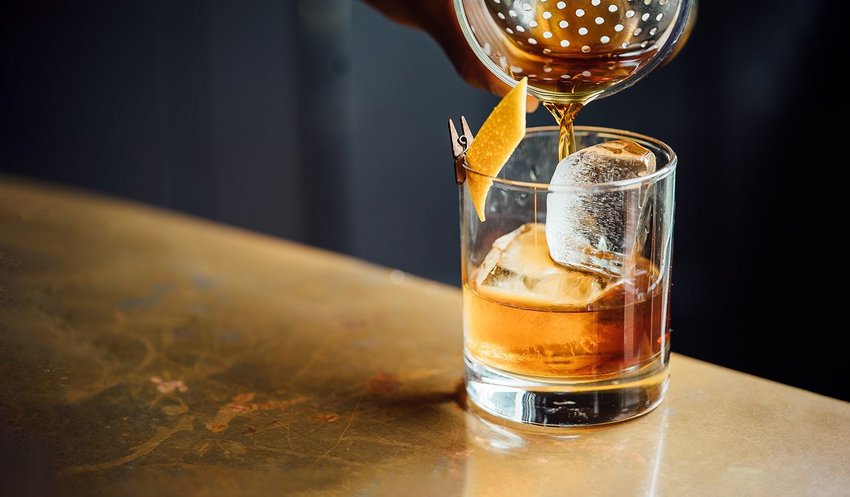The history of modern cocktails can be traced back to 18th century England, where folks would gather in punch houses and drink from large punch bowls. These bowls contained beverages composed of spirits, fruit juices, spices, and other ingredients.
While individually mixed drinks were later invented in America, these creative cauldrons are what eventually gave us the cocktails we know and love today. Let’s take a look at how some of the most enduring (and quaffable!) concoctions got their names.
Old Fashioned
The story behind the Old Fashioned is really all in the name. It’s a simple drink involving a spirit (usually bourbon or rye whiskey), a dash of sugar or simple syrup and a small amount of an aromatic bitter. There are variations on the spirit and the potential to add muddled orange peel, but the drink is straightforward and, you guessed it, old fashioned.
Tom Collins
This drink sounds more like a suburban neighbor than an upscale cocktail. By all accounts, there is no mixologist named Tom Collins behind the drink. Part of the name came from a gin drink called a John Collins, and there is also an urban legend about an 1870s prank that involved sending bar hoppers on wild goose chases looking for a mysterious “Tom Collins.” Eventually barkeeps stopped playing and started offering them a drink instead. It is likely these two explanations merged and gave us the gin, lemon, simple syrup and soda cocktail we are familiar with today.
Margarita
There are a few stories out there about where margaritas came from. Margaret “Margarita” Sames claimed to invent the drink in 1948, though there are Jose Cuervo tequila adverts for margs dating back to 1945. It also might have been invented by Danny Negrete for his sister Margarita’s wedding in the 1930s. What we do know is that "margarita" is Spanish for daisy. So it’s quite possible that the drink (tequila, lime, and triple sec) came as an evolution of another flower-named drink — a tequila daisy or a magnolia.
Martini
Famously enjoyed shaken, not stirred, by James Bond, martinis date back to around 1900. Again, there are a few theories out there about where the name came from. The simplest and most likely is that the drink was created using Martini & Rossi vermouth and gin, and martini — also made with vodka, with a lemon twist or with an olive — stuck as the name.
Mimosa
A simple mixture of champagne and orange juice played a key role in defining the meal of brunch, as well as creating the perfect excuse to drink before noon. The vivid orange-yellow color is reminiscent of the mimosa plant, which is where the name comes from.
Mojito
Here begins the Cuban portion of our discussion. Since Cuba is the birthplace of some particularly tasty brands of rum, it's natural that its denizens created more than one way to enjoy it. First up, we have the mojito. En español, "mojo" is the name for a Cuban citrus marinade. The prominence of lime in the drink (which also features muddled mint) permeated through to the name, as "mojito" means little mojo.
Cuba Libre
Literally translated, Cuba Libre means Free Cuba. It is thought that the drink was created after the liberation of Cuba from the Spaniards during the Spanish-American war in 1900, though it is unclear whether the drink was made by Cubans or Americans. (Alternately, try a rum and Coke.)
Daiquiri
Also from Cuba, we have a drink akin to a mint-less mojito. Daiquiri is a village on the southeast coast of Cuba. Supposedly, it was also invented around the Spanish-American War, this time by Americans who ran out of gin and had to figure out the best way to enjoy the Cuban rum. Adding sugar (in the form of simple syrup) and lime oughta do it!
Photo credit: Adam Jaime/ Unsplash

